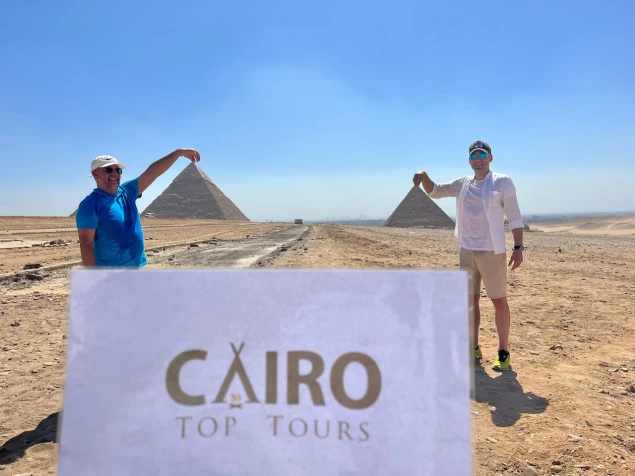
King Akhenaten | Amenhotep IV
King Akhenaten: The Heretic Pharaoh Who Revolutionized Ancient Egypt
In the long story of ancient Egypt, King Akhenaten had a dramatic impact by changing a strongly organized religion. Born Amenhotep IV, the man we now know as Akhenaten was the pharaoh during Egypt’s New Kingdom in the 18th Dynasty, one of the country’s most prosperous and powerful eras. Instead of following the traditions of his ancestors, Akhenaten instigated a major religious, artistic and cultural upheaval that set his time among the pharaohs apart as being quite radical.
Early Life and Ascension to the Throne
The pharaoh Amenhotep IV was the offspring of Pharaoh Amenhotep III and his queen, Tiye, considered one of the most powerful queens of the New Kingdom. During his father’s time, there was substantial prosperity and important foreign connections, leaving his successor with much to achieve. Though, around 1353 BCE Amenhotep IV became king and proved to be a ruler of a very different style.
When he first became king, Amenhotep IV upheld the old customs. Over the next five years, a major transformation took place. He changed his name to Akhenaten which means “Effective for Aten,” to make it clear he devoted himself to the sun disk called Aten.
The Religious Revolution
People still consider Akhenaten’s greatest and most challenging step to be his change from the polytheistic religion of Egypt which had been respected for generations. After Amun became the leading Egyptian god, Akhenaten rejected paying tribute to the pantheon. He considered only Aten, the visible sun disk, to be worthy of worship as the main god.
The presence of a new religious ideology in Egypt which is sometimes called monotheistic or henotheistic, had not been seen before. Aten was the only god worthy of worship, according to Akhenaten and his actions therefore diminished the Amun priests and dismantled their temples. It was about re-shaping society, by having all authority centered on the pharaoh and getting rid of the influence held by sacred groups.
In order to consolidate his revolution, Akhenaten organized the creation of a new city, known as Akhetaten (modern-day Amarna) which translates as “Horizon of the Aten.” Being in a remote area from Thebes and Memphis, the site of Akhetaten served as a center for Pharaoh’s efforts to reform Egypt’s religion.
Artistic and Cultural Changes
This era which we now call the Amarna Period, saw both a change in religion and new developments in art. Formally structured, traditional Egyptian art began to change towards a style that was more freer in its expression. Sculptures of Akhenaten typically show him with big eyes, an elongated head and a protruding belly, leading some to view these features as symbols, others as close to reality and a few as possibly related to a genetic problem.
Artworks produced in this era showed more consideration for family scenes. Artistic works show Akhenaten with his wife, Nefertiti and their children cozily together under the shining rays of Aten. It marked a difference from the earlier belief that the pharaohs were like gods.
Nefertiti was highly respected and known for her mysterious character. Although associated with her looks and a famous bust in Berlin’s Neues Museum, Nefertiti was not limited to being a consort. She is depicted joining in rituals and it is possible she ruled alongside Akhenaten. A number of theories mention that she took the title of pharaoh as Neferneferuaten after her husband’s passing.
Legacy and the Return to Orthodoxy
Akhenaten ruled for about 17 years. Following his passing, the religious and political system he set up unraveled quite rapidly. According to legends, Tutankhaten followed closely after Akhenaten and changed many policies made by Akhenaten. The young king established worship for the ancient gods in Thebes and renamed himself to demonstrate his support for Amun instead of Aten.
Since Akhenaten’s views were seen as very unorthodox, later Egyptians tried to remove any trace of him. He was not included in any royal lists, his monuments were destroyed or moved elsewhere and Akhetaten was abandoned and covered by the sands. It was only during the 19th century, after the ruins of Amarna were studied, that the world realized just how big an impact he had.
Historical Interpretations
After death, Akhenaten continued to grab the attention of historians, archaeologists and theologians for many years. A number of people view him as a leader who foretold the beginning of Abrahamic faiths. Certain people believe he was a religious radical who threw the nation into chaos with his reforms. Sigmund Freud suggested, been seen as controversial, that he believed Moses was a supporter of the Atenist idea, hinting at a common origin between Atenism and Judaism.
The situation is probably not as simple as it seems. Although Akhenaten’s religious beliefs were emotional and possibly believed, they served his political purposes as well. By taking away the priesthood’s power and putting all religious authority under the pharaoh, Akhenaten could have been trying to change both Egyptian religion and the social structure.
Pharaoh Akhenaten, who ruled the New Kingdom of Egypt during the 18th Dynasty, ruled from 1353 to 1336 BCE. His other names, which all translate to "successful for" or "of great use to" the god Aten, are "Akhnaton," "Akhenatenaton," "Ecnaton," or "Ijnaton."
The Akhenaten attempt ended early. After his death, he ascended to the throne as the young Tutankhamen, who reopened the temples of Amun for worship, brought the capital to Thebes, and changed his name to Tutankhamen instead of the name given by his father, Akhenaten, which was Tutankhaten.
Akhenaten, the first known monotheist, initiated a significant theological, political, and religious revolution lasting 17 years, impacting history throughout his reign.
Of all his reforms, perhaps the most marked was that of elevating Aten, the sun disk, into the place of chief deity. In the first years of his reign, he gradually brought about the transition away from traditional polytheism, which honored the gods Amun, Osiris, and Ra, toward the exclusive worship of Aten. In the fifth year of rule, he reconfirmed his name, adding to it a new one: Akhenaten, which means "Effective for Aten," in honor of his new deity.
Also, Akhenaten changed the capital city from Thebes to a new city he made called Akhetaten (the modern-day Amarna). This city was built with the intention that it would be the center of worship of Aten and the administrative point for the whole of Egypt. This act was the most audacious he did because it was a total cut-off from the very many centuries-old influence of the powerful priestly office of Amun over society in general.















